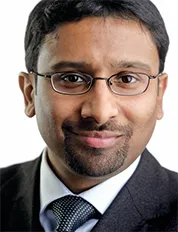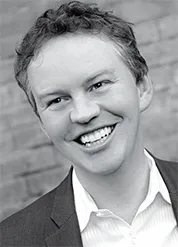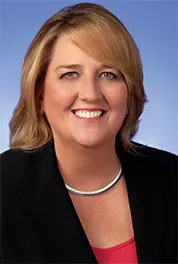Plan, Do, Reflect: Clinical Teaching at the Law School
For a full week last fall, Professor Alison Siegler and Jason Feld, ’13, spent between 12 and 15 hours a day in the Mandel Legal Aid Clinic, writing an amicus brief for Alleyne v. United States, a US Supreme Court case on mandatory minimum sentences. Sections of the brief were also written by Frank Dickerson, ’10, and Charles Woodworth, ’11, now at Mayer Brown. Sarah Nudelman, ’13, conducted a huge amount of research for the brief. Then, in January, Siegler, Feld, Nudelman, and Federal Criminal Justice Clinic Fellow Erica Zunkel traveled to Washington to watch the oral argument. They observed the Supreme Court justices and parties as they engaged in highly intellectual dialogue about the legal issues at the heart of the case. In response to a question from the justices about the practical implications of the case, the federal defender referenced the clinic’s amicus brief, and the justices asked follow-up questions about it. Afterward, Siegler and her students met to talk about what had happened and to make predictions about the ultimate outcome of the case.
This is what teaching looks like in the Law School’s clinics. Siegler is the Founder and Director of the Federal Criminal Justice Clinic, the only legal clinic in the country dedicated solely to representing indigent defendants charged with federal felonies.
Siegler, a former federal public defender, follows the general model of clinical professors at the Law School: plan, do, reflect. If that sounds simple, it’s not. Clinical teachers have to balance two critical goals: educate the next generation of lawyers, and give the best possible representation to clients in what tend to be very complicated, high-level cases. The clinician is the safeguard, the professional who makes sure the students’ work is top-notch. And as talented as Chicago Law students are, they are still students. It takes enormous effort on the part of the professors to make sure the legal products are as good as they can possibly be. Luckily, that is exactly what they do best.
A single motion written by one of her students goes through 15 to 20 drafts, Siegler said. The process is equally rigorous for oral arguments, for which students prepare by drafting scripts, conducting moots with Siegler and fellow students, and thinking ahead to every question the judge might ask.
Siegler assures her students before they stand up in court: “You’ve got your script, but you might get different questions. You’re prepared. You know the answer to whatever the judge is going to ask.”
The Supreme Court case, Alleyne, asks whether the Court’s decision in Harris v. United States (2002) should be overturned. Harris held that the Constitution does not require a jury to find the facts needed to impose or increase a mandatory minimum sentence. For example, a jury could find a defendant guilty of distributing drugs, and a judge could impose a mandatory minimum sentence based on the amount of drugs, a fact that was not charged in the indictment or proved to the jury beyond a reasonable doubt.
In their brief, written on behalf of The Sentencing Project and the American Civil Liberties Union, Siegler and her students argued that Harris must be overturned, because it is not consistent with the Court’s Sixth Amendment jurisprudence. They also argued that overruling Harris would resolve a circuit split and would reduce racial disparities in sentencing. The Supreme Court’s decision is pending.
The general “plan, do, reflect” model permeates the Clinic, in which about 175 students participate each year, said Jeff Leslie, who is Acting Associate Dean for Clinical and Experiential Learning and also Clinical Professor of Law and Paul J. Tierney Director of the Housing Initiative. He is Faculty Director of Curriculum as well.
“Our students do things that the faculty would do at other schools,” he said. “Our job is to make sure our client service is top-notch. That’s why it requires close supervision.”
For example, in Leslie’s commercial real estate clinic, his students need to learn how to be deal lawyers for different parties involved in affordable housing development: community-based housing developers, tenant groups, and others. Leslie teaches students how to advise clients on structuring issues, construction loan documents, construction contracts, purchase and sale agreements, partnership agreements, and other contracts. They also work on securing zoning and other government approvals, assist clients as they work to resolve compliance issues, and participate in the preparation of evidentiary and closing documents.
To get the students started, Leslie borrows some standard classroom techniques: lectures, law review articles, and templates from real-life transactions. He also guides students through an interviewing exercise in which they role-play as clients and attorneys. Then, when it’s time to do the actual transactional work, Leslie is there, watching closely.
When the task is complete, “we go over with them how it went, and come up with an individualized plan to improve,” he said.
Leslie strikes a helpful balance of supervising without micromanaging, said Hallock Svensk, ’13, who spent so many quarters in the clinic that he had to quit; he couldn’t earn any more credit.
“Jeff’s not going to hover over everything you do. It’s going to be what you make of it,” Svensk said. “It’s about you going and figuring it out yourself.”
In the fall, Svensk gave a presentation to tenants in an 18-unit affordable housing development that was transitioning from a rental to a cooperative ownership model. His job was to train the residents about what a co-op is, how it is financed and operated, and what would be involved in the upcoming conversion transaction. Before Svensk gave the real presentation, he gave it in class, and Leslie offered critiques and feedback. It has been the same when he has attended a meeting or written a memo, contract, or other document, Svensk said.
“It’s a lot of coaching you to be confident,” he said. “He asks, ‘how did that meeting go? Did you speak up? Did you know what you were talking about?’” Leslie also gave him a lot of advice about dealing with the politics of any given situation, when different groups are coming together in an effort to collaborate.
Professor Elizabeth Kregor, Director of the Institute for Justice Clinic on Entrepreneurship, teaches her students early that they can prepare very thoroughly for just about anything, even a seemingly simple phone call.
“It takes a while for students to understand how much preparation they can do and how valuable that preparation can be,” she said. She also encourages students to forgo sample or template contracts and start from scratch, which forces them to think through the basics of the contract and its goals.
Sometimes clinical professors are the ones doing the transactional negotiations or courtroom arguments, and the students observe. Other times, they help the students plan the task, and then the professor observes as the student completes it, ready to jump in if necessary. And other times, the student and professor plan together, but the professor is absent from the actual event.
For example, Collette Brown, ’13, is part of the Criminal and Juvenile Justice Project, taught by Professors Randolph Stone and Herschella Conyers. This fall, she traveled to Menard Correctional Center in southern Illinois to interview two clients who had been sentenced to life for murders they committed as juveniles. The clinic is actively working to fight the practice of sentencing juveniles to life without parole through both litigation and policy avenues.
Brown did the interviews with fellow clinic student Soo Park, ’13, Clinic Social Worker Michelle Geller, and two social work students. Before the trip, they had an extensive meeting with Stone about what they were trying to accomplish and what information they needed to obtain.
“The thing about Randolph is, he really assures us that we have the knowledge we need,” Brown said. “We’re law students, and we’re here for a reason, and we can do it. He really encouraged us to work off the client.”
Stone said he tells his students to “spend as much time as you did planning a task reflecting about it. Where did you achieve the results you wanted? Where did you fail?” That kind of constant reflection will serve them well in practice someday, Stone said.
The clients in the Criminal and Juvenile Justice Project are poor children and young adults accused of delinquency and crime. As a sister project, Stone is working to develop a new clinic focusing on postincarceration reentry. It was inspired by all the “collateral consequences” the clinic sees as former offenders try to reenter society. They have lingering legal issues, problems with housing and employment, and other challenges.
The new clinic was born because the clinical professors encourage the students to think past the case at hand.
“We want them to think about, why is the client here in the first place? Are there things we as lawyers can do to prevent them from coming back?” Stone said. That might mean counseling the client as he or she finds social services, or filing petitions to seal or expunge records.
Of course, Stone said, he also talks to the students about how much is too much.
“We talk about these issues—how much passion do you bring to the case? How close do you get to the clients? When do you know you’re crossing the line and getting emotionally involved?”
Sometimes, the clinical teacher’s job is to push students out of their comfort zones. Professor Mark Heyrman runs the Mental Health Project. A few years ago, he identified a problem: the Sex Offender Registration Act, which requires sex offenders register once a year, and once a week if they lack a fixed address, is very difficult for the very poor, homeless, and mentally ill to comply with. Public defenders complained that these men were being arrested time and time again for failing to register.
Heyrman sat down with a student and said, “‘Let’s go talk to some of these people—is there anything we can do for them?” His students are often understandably uneasy about working with sex offenders, Heyrman said, but they learn that this population needs help too. He and the student started by meeting with a man in a state mental hospital. Heyrman then pushed the student for a legal argument that would remedy this problem. It couldn’t be that the law is unconstitutional, because the courts say it’s not.
The student came up with this idea: the registration law violates the Americans with Disabilities Act because it is impossible for the mentally ill to comply with it. The clinic sued the state two years ago, and the case is still pending.
Heyrman is the longest-serving clinical teacher, having started in 1978. His story and motivation are typical of the clinical professors: he worked in a service field (in his case, mental health), and wanted to teach younger lawyers how to do that work as well.
“I’m interested in connecting what students learn in the rest of the Law School curriculum to how the law is practiced,” he said. “I’m interested in trying to improve the quality of legal practice.”
Park, the student who did the prison interviews with Brown, started in Stone’s clinic in June. The relationship with clinical professors is unique, she said.
“They are definitely teaching figures, but they’re also mentors to a large degree,” she said. “I don’t want to say that it’s informal per se, but you do get to know them on a personal level. The kind of work we do is so personal.”
When it comes down to it, clinical teaching is about showing students how to approach tasks for the very first time, Heyrman said.
“Because, if you’re lucky, you’ll get to do that throughout your legal career,” he said.
And Chicago Law students tend to be lucky, and good, he added.
“Our graduates are smart. They tend to gravitate to the top of the practice, where they always get to do new things.”


